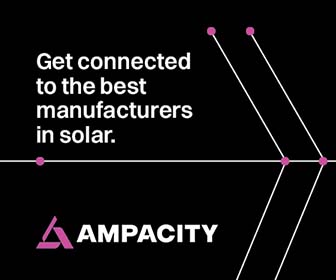Solar Customer Acquisition
All about smart data
When banks issued their first general-purpose credit cards in the late 1950s and early 1960s, there wasn't much science behind their marketing. In fact, they sent the cards out in mass mailings to tens of thousands of customers and provided credit to anyone who responded. The results were chaotic and financially disastrous.
In the next few decades, technology would come along to reduce fraud and connect networks of merchants. By the late 1980s and early 1990s, a real breakthrough happened, creditors figured out how to analyze the data they had collected for many years about their customers.
Data analytics changed everything. Banks could see which customers were most likely to pay off their monthly balances (and therefore weren't profitable), which customers were likely to default (and definitely were not profitable), and which customers would routinely carry high balances but were not likely to default (and were, therefore, lucrative). Banks could use credit scores, derived in part from customers' repayment habits, and other financial data to personalize their pricing and marketing strategies. They could also offer pricing in advance for customers, which avoided a lengthy review process. The profits followed.
Why the brief history of the evolution of the financial services industry? Because solar has several key parallels.
The solar customer acquisition problem
Until recently, rooftop solar companies have had to do little marketing. Early adopters and innovators eagerly purchased panels and installed them on their roofs. But that customer segment is nearly saturated, and it's time to market PV to the masses. Solar providers face a quandary; send out blanket, blind offers like banks first did and risk low conversion rates and heavy financial losses, or use the kind of data analytics that helped the financial services industry thrive, by targeting personalized offers to the most qualified people.
It's actually not much of a choice. Taking current customer acquisition costs into consideration, it's clear that solar companies need a fine-tuned approach to marketing. It costs solar providers on average about $3,000, and often up to $8,000, per potential new customer to complete the sales cycle. Two of the main barriers to cost-effective marketing include a lack of ability to prioritize customers to target, and poor quality leads requiring greater effort and cost to close sales. To spend marketing dollars most efficiently, solar companies need to know who the likely buyers are; people with suitable roofs and credit worthiness. Once they've established those criteria, solar companies should determine who among those potential customers are most likely to purchase.
The data analytics solution
Determining qualified leads and purchase propensities can seem daunting. But solar providers can invest in data analytics technology which performs both tasks automatically. A strong data technology solution will execute four key functions: provide energy data, provide solar generation estimates, evaluate and score potential leads, and generate qualified leads. Step one, providing energy data, is the catalyst for all of the other steps. Comprehensive energy data analytics will aggregate customers' consumption habits and demographics, along with physical characteristics of their homes (size, construction materials, HVAC configuration, etc.). It's the combination of this data that allows for thorough analysis and accurate qualification of appropriate leads.
With these capabilities at hand, solar providers decrease acquisition costs and enable their sales teams to spend more time focused on high quality leads. Using data-driven solar consumption, generation, and return-on-investment estimates, teams can personalize all of their communication with potential customers, thereby forming stronger relationships that convert to sales more frequently. Based on these estimates, providers also see which leads do not meet minimum propensity thresholds. They can qualify and market to these leads through less expensive channels.
Successful marketing from the start
As solar providers ramp up their marketing efforts to the general population, it makes sense to power their outreach with data from the outset. Why risk the losses and frustration that befell the banks before they incorporated data and targeted marketing? The consumption profiles data technology can generate for solar providers work like credit reports do for banks: they give important insight into how customers live and use resources, and how the businesses marketing to those customers can expect them to behave. Just as banks have profited from their more personalized, tailored credit offers, so too can solar providers profit from individualized, informed marketing practices.
Solar customers will benefit too. Marketing solar panels to households well suited to support them, physically and financially, helps residents lower their energy expenses down the line as solar providers well know. Just how beneficial the panels will be for individual homes is something the data analytics can estimate, and it's something solar providers can share as they move to acquire customers. With this data-driven marketing, solar providers set more people up to contribute to a greener, more stable, more affordable energy future.
Steve Pockross is a vice president at Tendril, Inc. where he leads the development of new business solutions for the solar industry, leveraging the company's unique big data, software, and analytics capabilities.
Tendril, Inc. | www.tendrilinc.com
Volume: 2016 July/August









.png?r=2287)


